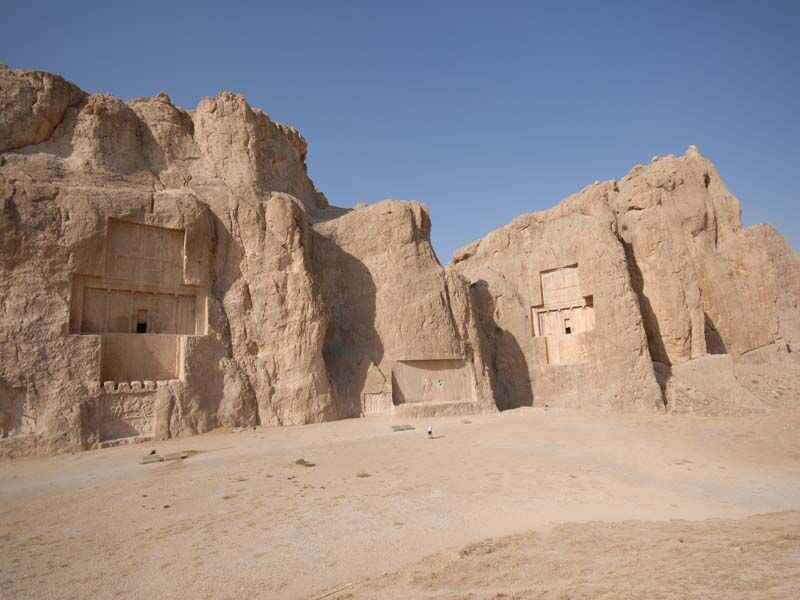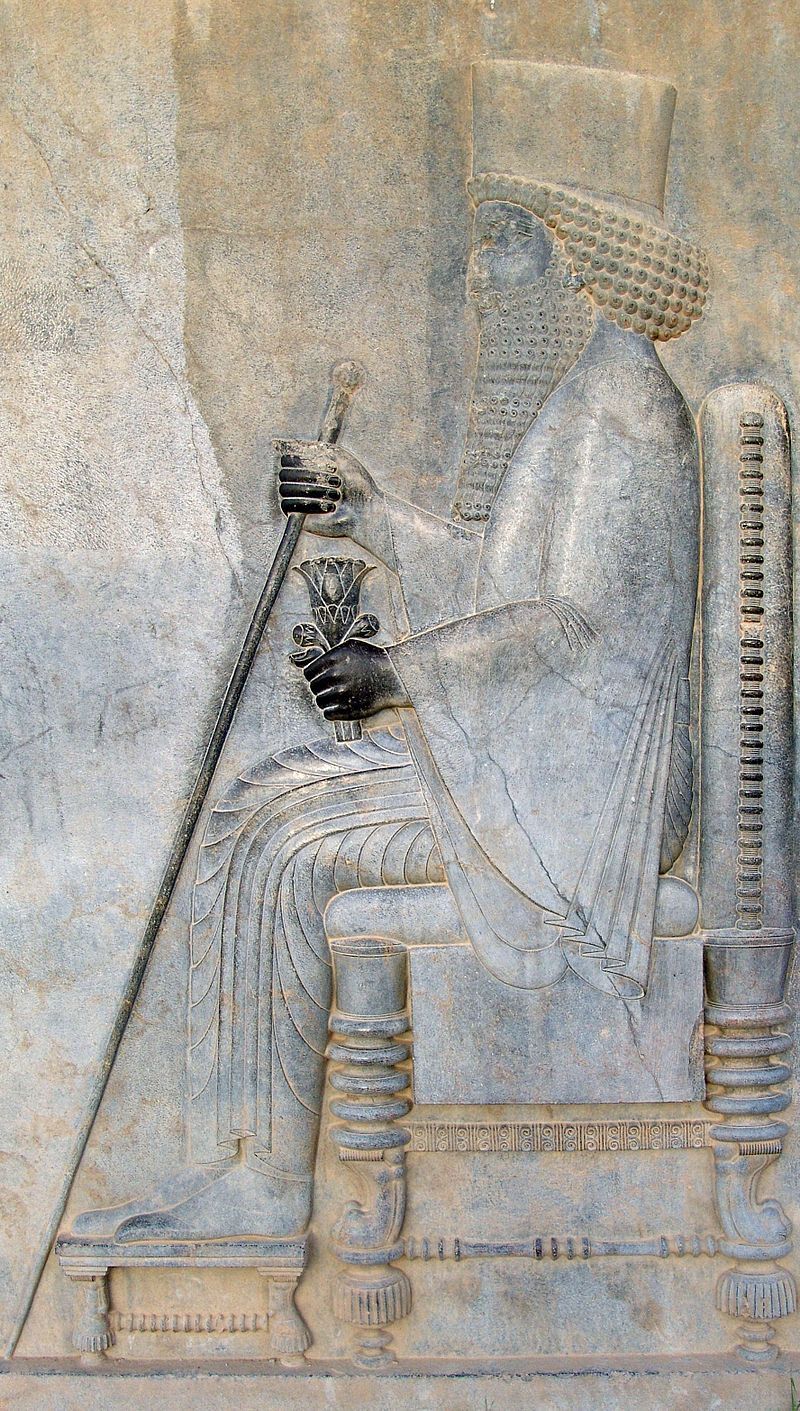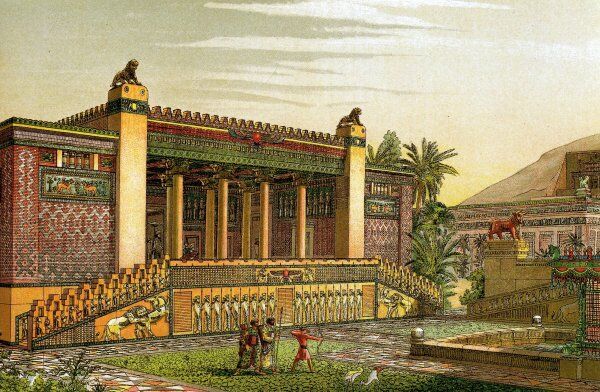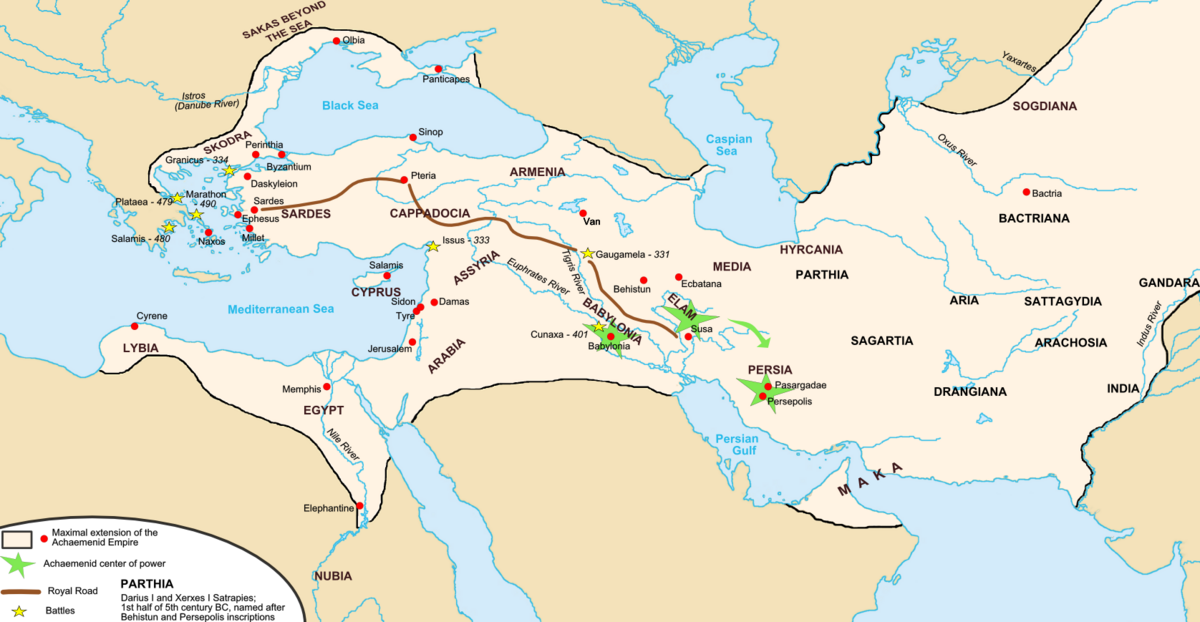The concepts covered in this concept sheet go beyond those seen in secondary school. It is intended as a supplement for those who are curious to find out more.
Like all civilisations, the Persian commoners or people were originally made up of different tribes. In the 9th century BC, most of these tribes lived by agriculture, although some were still nomadic, constantly on the move in search of food. These various communities from the north (modern-day Russia) settled around the Persian Gulf in what is now Iran. The most powerful tribe, the Hakhâmanick, founded a kingdom whose suzerain (king) was Achaemenes. Gradually, the tribes joined the kingdom to form two large regions: the kingdom of Ariaramnes and the kingdom of Cyrus I.
Around the 6th century BC, there were two major groups of people in the area: the Medes and the Persians. Not only did they share the same territory, but their language and culture were very similar. The Greeks, unable to tell the two nations apart, called them both Persia. A century later, King Cyrus II unified the two kingdoms and ruled over both the Medes and the Persians at the same time.
Darius I succeeded Cyrus II and reorganised the now unified empire into different administrative regions called satrapies (rather like provinces). Each satrapy had to pay an income tax to the kingdom (a tribute), which was paid in gold coins.
Darius I created a code of laws that met the needs of most regions of his empire. He modernised communication routes, building roads for the passage of carts and horses in particular, and had a canal dug to connect the Nile River to the Red Sea.

The Mausoleum of Naqsh-é Rustam is the tomb of Darius I and his successors. This mausoleum is located near Persepolis.
The Persian Empire was a religiously-based absolute monarchy, meaning that the king ruled alone, in the name of the commoners or the people, while remaining subject to the laws of the gods. Darius I made it a point of honour to respect and accommodate the different populations and religions of his empire. Among other things, the deities of Egypt and Babylon were honoured and the local traditions of these regions were respected.
Darius I was an emperor (a king who governed several states) who ruled Persia around 500 BC. He belonged to the Achaemenid line. He succeeded King Cyrus II and reorganised the empire into administrative regions. Darius I completely reorganised the system of governance in Persia. He named the regions satrapies. Each satrapy had to pay an income tax to the king (tribute).
In return, Darius I created a code of laws to protect these regions and modernised the roads. It was under his reign that a canal was dug between the Nile and the Red Sea. He was conciliatory towards his own people, listening to them and making occasional changes to his policies. Darius I respected the population's different religious practices and local traditions.
He put up with the diversity that existed in his great empire, but did not tolerate revolts; he did not hesitate to send his army in quickly to crush any outbreak of dissent. Darius I died during a battle between his army and the Egyptian commoners or people, who were beginning to revolt. He was replaced by Xerxes I.

Darius I, Persian emperor around 500 BC.
Persia was the name given to the present-day country of Iran from ancient times until the early 20th century. Several peoples lived together in Persia, including the Kurds and the Persians. Persia had a succession of dynasties in ancient times. One of these dynasties founded one of the most astonishing cities of its time: Persepolis.
The capital of the Persian Empire in the province of Fars, Persepolis owes its foundation to King Darius I, in 521 BC. He created this city to glorify the Achaemenid Persian Empire, the civilisation that populated this region of the Middle East. Construction of the city continued for two centuries. The city benefited from the best artisans in sculpture, goldsmiths and other ornaments.
Persepolis boasts many grandiose structures, palaces with grand staircases, an immense central square and long walls encircling the city. The city was entered through monumental, finely sculpted gates.
The art and architecture of the Persian Empire are unique, but were influenced by the surrounding regions of Ionia, Babylon and Egypt. Greek influence can be seen in the Ionic style of the palace columns. These include: the Apadana, the largest palace, with its 100 columns, could seat 10,000 people; the Tashara, or Palace of Darius, known for its original asymmetry; the Tripylon, a palace with three entrances; and the Hadish, or palace of Xerxes, topped with 36 stone and wood columns.

Palace of Darius (Tashara)
A network of water pipes snaked through the basement of the palaces, draining away the water and protecting the foundations.
The city of Persepolis was partly destroyed by Alexander the Great in 331 BC.
In principle, education was open to all, but only the elite really had access to it. The young Persians who went to school were educated to become soldiers and citizens loyal to the king. Education focused on physical development and the military arts. They were also taught Persian traditions and the law.
The Persian Empire wanted to accommodate the different religious practices of its commoners or people. Most Persians followed the sacramental writings of the Avesta, which consisted of 21 books (written in the Avestic alphabet). The Avesta was a collection of texts, poems and philosophical essays praising right thinking and opposing wrong thinking, choosing rightness and rejecting error. The all-powerful god was called Ahura Mazdà. The priests studied three sciences: aetiology (the study of the causes of phenomena), liturgy (the study of sacramental texts) and law (the study of human laws).
